Museum-Quality Education
By Tina Kramer
 For Chris Williams ’14, the fifth time was the charm. After four false starts at college, something finally clicked. Perhaps most important, he crossed paths with Dr. Lucy Laufe, head of the collegewide Honors Program.
For Chris Williams ’14, the fifth time was the charm. After four false starts at college, something finally clicked. Perhaps most important, he crossed paths with Dr. Lucy Laufe, head of the collegewide Honors Program.
“She really guided my focus, showing me new opportunities,” says Williams, a cybersecurity major. Laufe recommended that Williams take honors courses, which ultimately led him to the Collegeís Paul Peck Humanities Institute (PPHI), and its unique internship programs for high-achieving students at the Library of Congress, the Smithsonian Institution, and the United States Holocaust Memorial Museum.
In a Class by Themselves
Montgomery College is the only two-year college in the nation that places interns at the three institutions. The internships provide an exceptional opportunity for students to experience the professional environment of world-class museum and library research activities.
Getting that opportunity is far from easy. The application process is rigorous and competitive. Students spend hours completing applications materials and essays, and are interviewed by MC honors faculty members. Only those with the best applications are sent on to the institutions for further consideration.
Once accepted by one of the institutions, interns enroll in a corresponding honors course and are assigned faculty mentors, who meet with the students to discuss internship experiences and progress on a substantial research paper.
The stereotype that the intern makes the coffee and the copies couldn’t be further from the truth. Students engage in professionally meaningful tasks, such as collecting, analyzing, and organizing activities; designing and preparing new exhibits; abstracting and archiving academic materials; planning new educational programs; and assisting and guiding museum visitors.
Since its inception in 1998, the program has placed more than 200 students at the three institutions.
A New Chapter
Chris Williams worked with Professor Bette Petrides, PPHI internship coordinator, on an internship opportunity at the Library of Congress. His resume caught the eye of Sean Lang, chief information officer at the library, who brought Williams on board.
It’s no surprise Lang was interested in the cybersecurity student. Williams is president of the College’s Cyberwatch Club, which recently took first place in the community college division of the 2013 Digital Forensics Challenge, sponsored by the US Department of Defense.
Williams worked in the Office of Strategic Initiatives for the IT Security Group’s security operations center, where he helped monitor the security of the library’s network. He and his team focused on the viruses and malware that the library receives.
“I built a workstation that is used to examine malware in order to fi nd details such as where it came from, who it was targeting, and what its primary function was,” says Williams. His internship research paper examined the implications of network security in protecting the intellectual property stored at the library. Williams presented his paper this past March at the Maryland Collegiate Honors Council, following in the footsteps of other former PPHI interns.
Reflecting on his experience, Williams says, “My internship allowed me to practice many of the cybersecurity skills learned in the classroom that translate to real work experience.” And, he adds, “I was asked to stay another six months.”
Igniting a Lifelong Passion
Jessica Lindsay ’13 has science in her DNA: Her father was an astrophysicist at Goddard Space Center in Greenbelt, and her grandfather was a pioneering space scientist who worked on early satellites that orbited the sun.
Fascinated with rocks, caves, and minerals, she has enjoyed exploring the limestone caves near her relatives’ home in West Virginia. Caving in the lava tubes as a fifth grader at Craters of the Moon National Monument in Idaho further fueled her interest in volcanology.
Dr. Alan Cutler, her geology professor at Montgomery College, thought sheíd be an ideal candidate for an internship at the National Museum of Natural History. There was a catch, though: Lindsay didnít have the required 3.4 grade point average to apply.
“I had to work hard to get my GPA up,” says Lindsay. “The application was daunting, but I was quite determined and able to push past it.”
With glowing recommendations from Cutler and Physics Professor Kris Lui, Lindsay snagged a prestigious internship in the museumís Department of Mineralogy, working with Dr. Michael Wise, a well-known mineralogist. As part of her research, she perused the scientific literature, where she discovered a number of articles written by her mentor. She admits that she didnít realize at fi rst ìwhat a big deal my mentor is.”
Lindsay is gaining valuable hands-on experience preparing samples for x-ray crystallography. She also works with such sophisticated tools as a scanning electron microscope and an electron microprobe.
She’s “flushed with scientific discovery, working on things that haven’t really been examined before,” and she’s proud that her work, both in the lab and in wading through the literature, could potentially be important to geology overall.
She explains that “A lot of work has been done concerning exsolution [a phenomenon during which molten rock solutions separate into two or more distinct minerals when cooled] in other mineral groups, such as feldspars, pyroxenes, and amphiboles, because members of those groups are either themselves very valuable resources or tend to occur with more economically important minerals.”
“The phosphates I’m working with—graftonite, triphylite, and sarcopside—are not particularly valuable to industry, so not much work has been done on them. However, some of the exsolution textures they exhibit resemble those known from other mineral groups.
“For whatever reason, very little has been done to compare the mechanisms of exsolution between mineral groups. I have already found a few cases of similar chemistry trends between the phosphates and other mineral groups. This means that the work done on these other groups might be applicable to the phosphates. If we could apply anything weíve learned by studying exsolution within any particular mineral group to another group, it would go a long way toward helping geologists understand how and why certain minerals and rocks formed.”
Lindsay completed her coursework at Montgomery College in December 2013 and hopes to transfer to the University of Maryland this fall. Her work has so impressed her mentor that he invited her to stay on through the spring.
“Jessica has a great passion for mineralogy and she has been a tremendous asset to my research efforts during her internship,” says mentor Wise. “She has quickly become proficient in identifying unknown minerals using x-ray diffraction techniques and her dedicated work has helped increase the scientific value of some of our collections.”
Found My Calling
By Zolani Ncube ’11
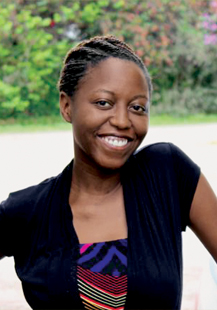 I had a law degree from the University of Cape Town, but life as a traditional lawyer did not appeal to me. I decided to go back to MC and take classes while I figured out my next course of action. Little did I know that one of those classes—Literature of the Holocaust—would be the catalyst that would change my life.
I had a law degree from the University of Cape Town, but life as a traditional lawyer did not appeal to me. I decided to go back to MC and take classes while I figured out my next course of action. Little did I know that one of those classes—Literature of the Holocaust—would be the catalyst that would change my life.
Professor Ellen Mainen’s class on the Holocaust was the highlight of my week. She introduced us to a world we hope will never be seen again.
Professor Mainen encouraged me to apply to an internship at the Holocaust Museum. I was surprised and honored to receive the position.
Some may think the Holocaust Museum is a cold, dreary place where people lament about the experiences of others.
That couldn’t be further from the truth. It was a place where I connected with many special people and experienced such love, that I looked forward to going to work every morning. Having the opportunity to be the first point of contact when visitors arrived, seeing the gratitude in their eyes when I helped them maneuver around the building, or simply giving them a moment of my time to listen to their stories, or to wipe their tears, convinced me that I had found my calling.
Because I was constantly faced with the injustices and atrocities that were rampant during the Holocaust, I eventually remembered my original motive for pursuing law years ago: I was committed to being “a voice for the voiceless.” It was then that I decided to pursue a graduate degree in a field where I would be in a position to do just that.
I enrolled in a master’s degree program at the Washington College of Law at American University. My specialization was fitting: international human rights and gender. What better way to advocate for the rights of disadvantaged populations the world over?
I then made the decision to go back to Zimbabwe and pursue a career in law, where I could serve my people first. I passed the bar in October 2013, was registered as a lawyer in December, and am currently working at the Law Society.
I care for people, and there is no greater place than the Holocaust Museum to be reminded that when we stop caring and loving one another, evil prevails. I thank the Paul Peck Humanities Institute for helping that idea become a reality in my life.
Making a Difference
An internship at a prestigious place, whether it’s the Library of Congress, the Smithsonian, or the United States Holocaust Memorial Museum, commands the attention of prospective employers and admissions representatives at competitive four-year schools. It demonstrates that the applicant had the intellect, drive, and maturity to win a much-coveted position.
Take, for example, Shelton Fitch ’13, who interned at the Holocaust Museum in spring 2013. Today he’s a scholarship student at George Washington University, majoring in international affairs.
Fitch worked at the museumís information desk, answering visitors’ questions. He also conducted large group orientations of up to 200 people, introducing them to museum exhibits, content, architecture, and safety.
“The fact that I was able to work side by side with survivors and hear their stories and be part of a team that works to educate others about the Holocaust gave me a heightened sense of moral responsibility much greater than when I entered,” says Fitch.
“I had no idea the museum was so dynamic in the sense that it means a lot of different things to different people. It serves as a place of remembrance and a place of education. Just experiencing this world-class institution with its mission of advancing and disseminating Holocaust knowledge made me feel good; it made me feel like I was doing something that benefi ts others.”
Fitch also served as a roving guide, walking through the exhibitions and answering questions, many of which concerned architecture. “The building itself is a work of art in the way it is structured—the lighting, the materials,” he says. “The museum does a very good job of invoking emotions from visitors. You feel kind of lost and alone in the beginning, and as you go into the Hall of Remembrance, it’s illuminated with natural light. It makes you feel different.”
Fitch’s research paper focused on the heroic acts of a Jewish diplomat, who, along with a Salvadoran consul in Europe, helped save the lives of thousands of Jews during the Holocaust by giving them Salvadoran citizenship papers so they could flee to other countries.
Fitch hopes one day to work in the field of international affairsóperhaps at the State Department or the United Nations. “I want to do something where I feel like I’m making a difference. Because as I learned from the Holocaust Museum, everyone is part of an interwoven fabric. What you do matters.”
Mining for Gold in the Nation’s Attic
Montgomery College students aren’t the only ones engaging in research at the Smithsonian Institution.
Since 1998, 158 faculty members—the Smithsonian Institution Fellows—have delved into independent research and study across an incredible range of disciplines.
Smithsonian Fellows gain access to unparalleled collections, world-class scholars, and state-of-the-art facilities to explore science, art, history, and culture.
The Smithsonian Faculty Fellowship Program is the signature program of the Paul Peck Humanities Institute. It offers fellows a dynamic, academically challenging cohort learning community in which they develop both professionally and personally. The seminar series at the Smithsonian introduces faculty to curators and staff, who share their expertise and offer insights into how artifacts are selected and exhibits shaped to communicate with the public.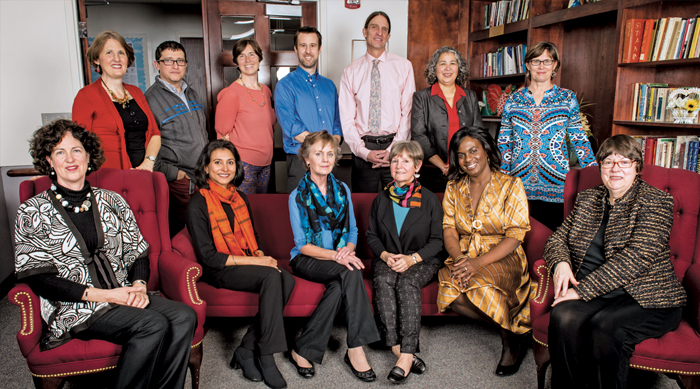

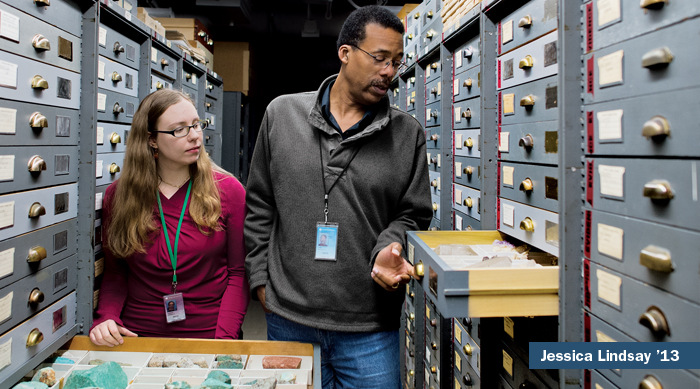
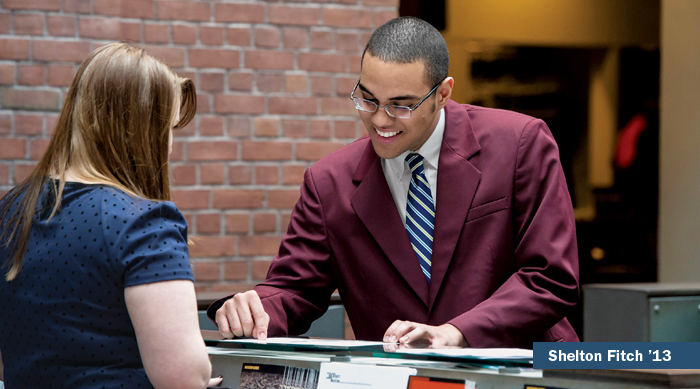

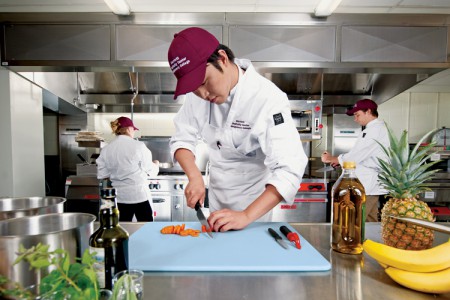
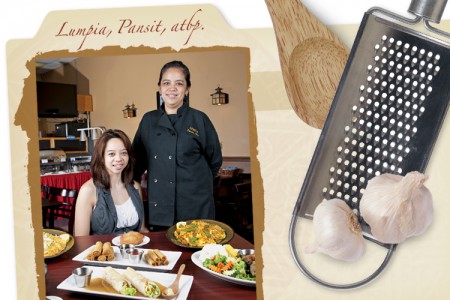
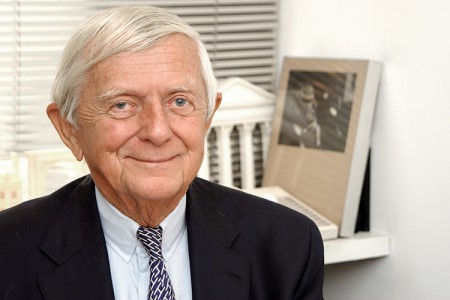
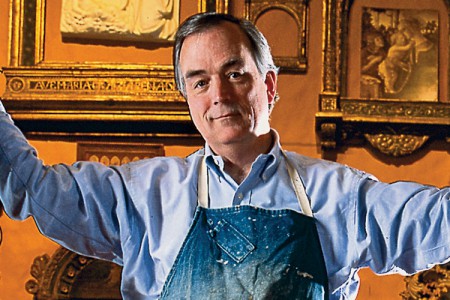
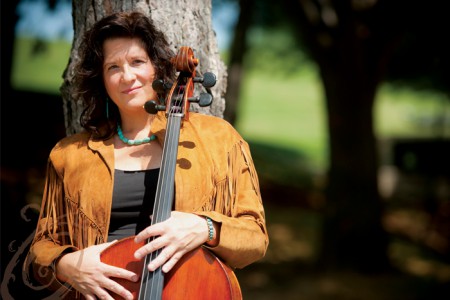
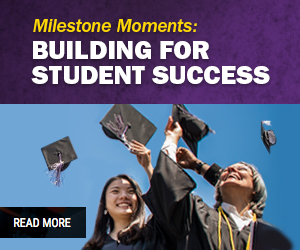
Follow Us